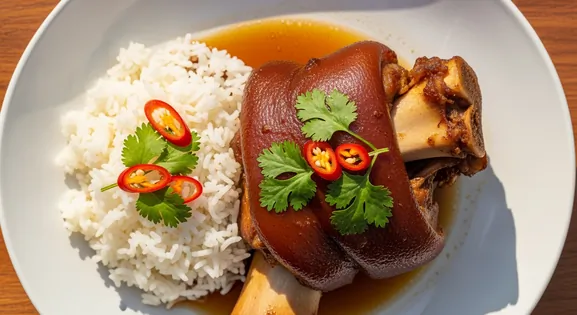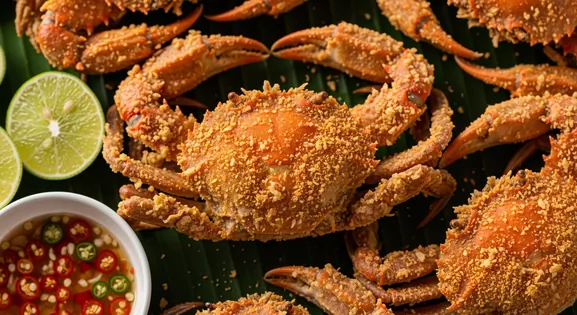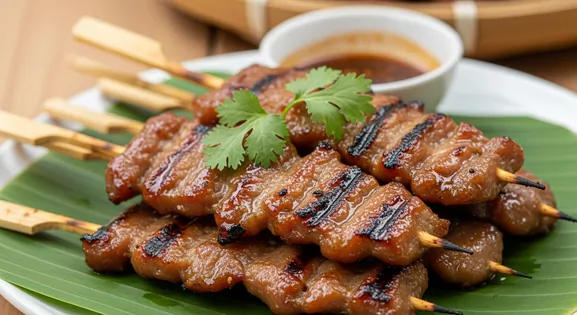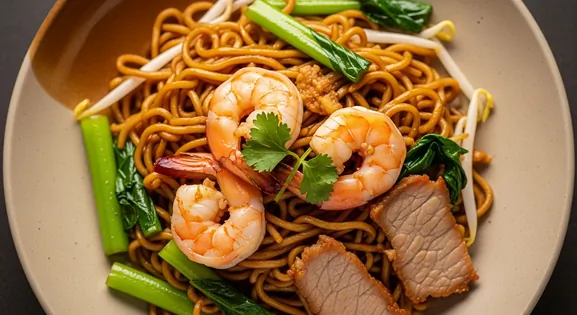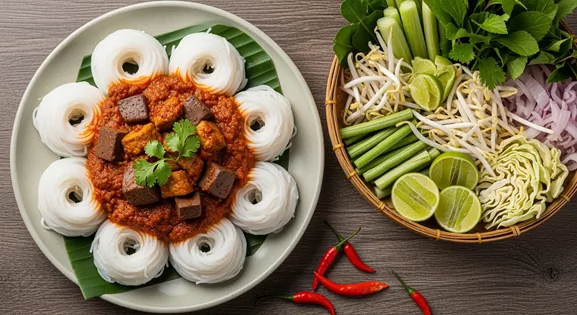Massaman Curry in Phuket
แกงมัสมั่น
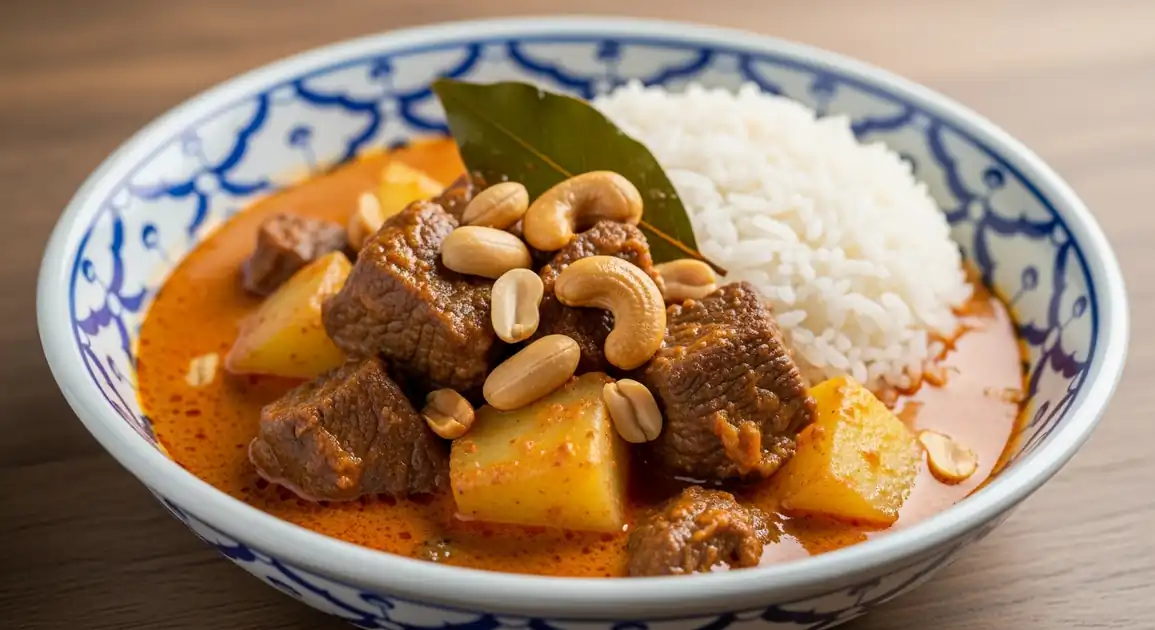
A Beloved Local Dish
Phuket's Massaman curry offers a unique blend of Thai and Muslim influences, a testament to the island's diverse culinary history. As you explore, you'll find this rich, subtly sweet, and aromatic curry in various settings, from bustling local markets to serene beachside eateries, each offering its own authentic take.
New to Massaman Curry? Learn all about its history in our complete guide.
Unlocking the Secrets of a Great Meal
For an authentic experience, seek out 'Roti shops' or 'Khao Mok Gai' (chicken biryani) stalls in Phuket Town, particularly around Soi Romanee or Thalang Road. Many serve excellent Massaman with a distinct Southern Thai Muslim flavor profile.
While beef or chicken Massaman is common, if you see "Massaman Phae" (goat Massaman) on the menu, especially in local Muslim restaurants, give it a try. It's a regional specialty and often incredibly tender and flavorful.
Many Phuket Massaman dishes, especially in local spots, come with a small side of 'Ajat' (a sweet and sour cucumber relish). Don't skip it! It perfectly cuts through the richness of the curry.
Authentic vs Imitation: The Telltale Signs
What to Look For
-
Muslim-run eateries ('Raan Khao Mok Gai' often sell Massaman too) or dedicated Southern Thai restaurants in Phuket Town or coastal areas.
Phuket's strong Muslim/Southern heritage ensures authenticity in these spots.
-
Curry served piping hot, especially important given Phuket's warm climate.
Heat safety is paramount for meat curries in tropical weather.
-
Use of fresh coconut milk (rich aroma, slight sweetness) rather than canned, often noticeable in quality Phuket establishments.
Quality indicator rather than strict safety, but common in good local places.
-
Clean premises, especially important in tourist-heavy beach areas where standards can vary.
Choose vendors prioritizing cleanliness.
What to avoid
-
Stalls in heavily touristed areas (e.g., Patong main strip) with very low prices and no local customers.
May compromise on ingredient quality or hygiene.
-
Curry that looks or smells stale, especially towards the end of the day.
Trust your senses; avoid anything suspect, especially meat dishes.
-
Lukewarm curry served from unheated pots.
Same risk as elsewhere; must be served hot.
-
Visible cross-contamination between raw ingredients and cooked curry at stalls.
Check food handling practices.
The Art of Ordering
When ordering Massaman in Phuket, specify your preferred meat (gai for chicken, neua for beef, phae for goat if available). Locals often enjoy it with plain steamed rice, but some places might offer roti. If you prefer less spice, mention "mai phet" (not spicy), though Massaman is generally mild. Don't hesitate to ask for "Ajat" (cucumber relish) if it's not automatically served, as it's a popular local accompaniment.
Top Spots for Massaman Curry in Phuket
Phuket Town
Explore the streets around the old town and local markets for authentic Muslim and Southern Thai restaurants.
Thalang Road, Near Jui Tui Shrine, Downtown Market (Talat Sod)
Lunch, Dinner
Patong / Kata / Karon (Beach Areas)
Numerous restaurants catering to tourists offer Massaman, quality can vary. Look for busy places.
Beach roads, Main restaurant strips
Lunch, Dinner
Cherngtalay / Laguna Area
Mix of local eateries near the villages and more upscale restaurants within the resort complexes.
Boat Avenue, Local markets near mosques
Lunch, Dinner
Vendor Tips
- Seek out restaurants advertising 'อาหารใต้' (Ahaan Tai - Southern Food) or 'อาหารอิสลาม' (Ahaan Islam - Islamic Food).
- Ask locals for recommendations ('ร้านไหนมีมัสมั่นอร่อย?' - Raan nai mee Massaman aroi? - Which shop has delicious Massaman?).
- Be clear about allergies (peanuts!) as it's a key ingredient here.
A Guide to Price, Portions, and More
Dietary Information
Important Note for Travelers: Your safety is our priority. Below are the common allergens associated with the traditional preparation of this dish. However, recipes and ingredients can vary significantly between establishments. Always confirm all ingredients directly with the food vendor before ordering, especially if you have a severe allergy.
Potential Allergens
Dietary Suitability
Price Guide
Budget Tips
- Explore Phuket Town for local Muslim restaurants ('Roti shops' often sell curries too) offering authentic Massaman at lower prices (80-150 THB).
- Local markets away from main beaches might have curry stalls.
- Beachfront restaurants will inevitably be more expensive (200-450+ THB).
Serving & Seasonality
Served with steamed rice. Sometimes accompanied by a small side of 'Ajat' (pickled cucumber, shallots, and chili in vinegar syrup) to cut the richness.Best Times to Enjoy
- Lunch: Widely available in local eateries and restaurants (11 AM - 3 PM).
- Dinner: A staple on dinner menus in tourist areas and local restaurants (6 PM - 10 PM).
Seasonal Availability
Year-round.
The Role of Massaman Curry in Local Culture
Local Significance
Massaman is a prominent dish in Phuket's culinary landscape, reflecting the island's Southern Thai identity and historical Muslim influences.
Eating Customs
- Eaten with rice. The accompanying 'Ajat' pickle is often served in the South to provide a refreshing contrast.
- Sharing dishes is standard practice.
Unique Preparations of Massaman Curry
Massaman Goat
Goat meat is more commonly used in Southern Thai Muslim cuisine compared to other regions, so Massaman Goat might be found.
Richer Coconut Cream
Southern Thai curries are often known for their very rich, undiluted coconut cream base, which might be noticeable in Phuket's Massaman.
Side of Ajat
Serving Massaman with Ajat (cucumber relish) is more common in Southern Thailand including Phuket.
Practical How-To Guides
How to Find the Best Massaman Curry in Phuket
Navigate Phuket's diverse culinary scene to discover authentic Southern Thai Massaman, ensuring a delicious and culturally rich dining experience beyond the usual tourist spots.
- Explore Phuket Town's local eateries, especially those specializing in Southern Thai or Muslim cuisine.
- Look beyond the main beaches; areas like Chalong, Rawai, or Kathu often have hidden gems.
- Ask hotel staff or local guides for recommendations for authentic 'Gaeng Massaman'.
- Visit local markets like the Phuket Weekend Market (Naka Market) or Chillva Market, but assess vendor hygiene carefully.
- Prioritize restaurants over street stalls if concerned about hygiene, especially with meat dishes.
Navigating Phuket's Market Stalls for Massaman
Learn how to confidently choose the best Massaman curry from bustling local markets, ensuring freshness and authentic flavors.
- Look for stalls with high turnover and a steady stream of local customers.
- Observe hygiene practices: clean serving utensils, covered food, and staff wearing gloves.
- Don't be afraid to ask about ingredients or if the curry was freshly made that day.
- Confirm the price before ordering, especially in tourist-heavy markets.
- Consider buying from stalls that specialize in curries rather than general food vendors.
Understanding Massaman Spice Levels in Phuket
Discover how Massaman curry's spice profile varies in Phuket and how to communicate your preference to local vendors.
- Massaman is generally mild, but Southern Thai cuisine can be spicier.
- If you prefer no spice, say "mai phet" (ไม่เผ็ด).
- If you like a little kick, you can say "phet nit noi" (เผ็ดนิดหน่อย - a little spicy).
- Be aware that some local eateries might add a small amount of chili for flavor, even if you ask for no spice.
- Trust your taste buds and don't hesitate to ask for more rice to balance the flavors.
Our Commitment to Quality
At Tasteplorers, our mission is to provide the most accurate and useful travel information in the world. To achieve this, all content on this site is created through our unique editorial framework. We utilize leading AI research tools, guided by our proprietary prompts, and a multi-stage validation process. This entire system is overseen by our editorial team to ensure everything we publish meets our high standards for accuracy, cultural nuance, and practical value for travelers.
Learn more about our Editorial Process and our Mission.
Countries
Explore regions
Europe
Discover Europe's diverse culinary landscape, from Mediterranean flavors to hearty Alpine fare. Learn to navigate markets, decode menus, and eat like a local.
Latin America & Caribbean
Discover the vibrant cuisines of Latin America & the Caribbean. Our expert guide covers everything from Mexican street food to Peruvian ceviche and market tips.
Oceania
Explore Oceania's diverse food scene. Learn about Polynesian earth ovens, Fijian feasts, and the vibrant café culture of Australia and New Zealand.
Southeast Asia
Explore Southeast Asia's diverse food cultures from Thailand to Vietnam. Get expert tips on navigating spice levels, choosing quality vendors, and understanding the rich traditions of the region.
